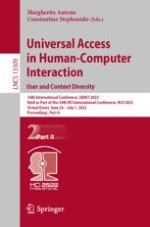2022 | OriginalPaper | Chapter
Leveraging Virtual Reality and Machine Learning as Mediated Learning Tools for Social Skill Development in Learners with Autism Spectrum Condition
Authors : Thomas Hughes-Roberts, Vanessa Cui, Mufti Mahmud, David J. Brown
Published in: Universal Access in Human-Computer Interaction. User and Context Diversity
Publisher: Springer International Publishing
Activate our intelligent search to find suitable subject content or patents.
Select sections of text to find matching patents with Artificial Intelligence. powered by
Select sections of text to find additional relevant content using AI-assisted search. powered by
